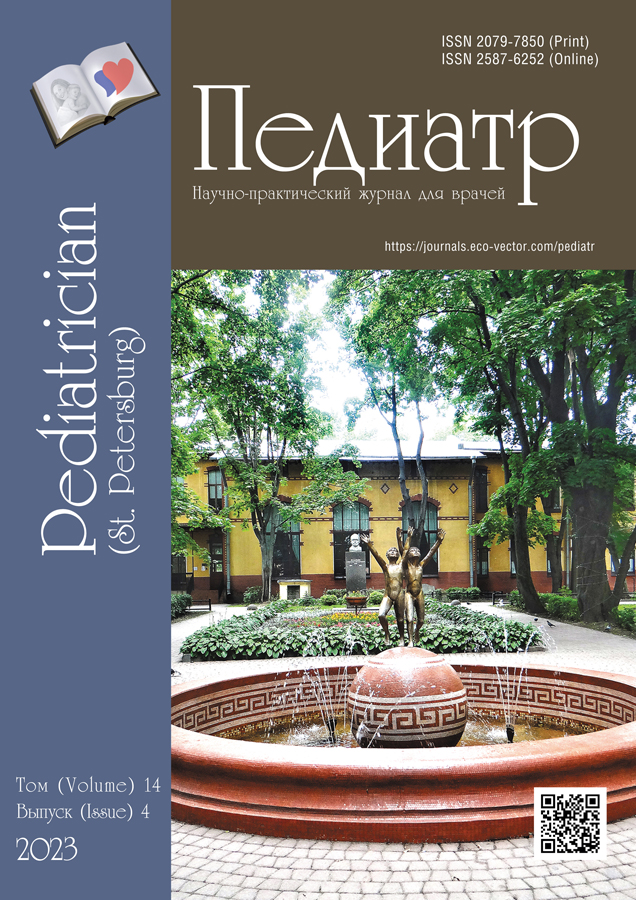Newborn baby needs operation: is it possible to reduce the risk of postoperative mortality?
- Authors: Bezhenar V.F.1, Ivanova L.A.2, Ivanov D.O.3, Krasnogorskaya O.L.3
-
Affiliations:
- Academician I.P. Pavlov First St. Petersburg State Medical University
- Kirov Military Medical Academy
- Saint Petersburg State Pediatric Medical University
- Issue: Vol 14, No 4 (2023)
- Pages: 85-92
- Section: Original studies
- URL: https://journals.eco-vector.com/pediatr/article/view/623714
- DOI: https://doi.org/10.17816/PED14485-92
- ID: 623714
Cite item
Abstract
BACKGROUND: It is traditionally believed that the mortality of children operated on in the first days of life depends on the severity of congenital malformation and gestational age.
AIM: The aim of the study was to analyze the causes of death of children in the neonatal period, after surgical interventions performed in the perinatal period, in order to develop a set of measures to reduce mortality.
MATERIALS AND METHODS: A retrospective study was conducted between two groups: the main group included 77 newborns who underwent surgery in the Perinatal Center of St. Petersburg State Pediatric Medical University in the perinatal period (the first 168 hours of extrauterine life) and died in the first 28 days of life, the control group included 287 children operated on in the perinatal period and survived 28 days.
RESULTS: It has been established that the cause of death in more than half of the newborns operated on in the perinatal period are infectious agents (viruses, bacteria and their combinations). The infectious process aggravates the course of the postoperative period and increases the number of complications of the underlying disease, which, as a result, leads to the death of the child in the neonatal period. Significant contributors include: chlamydial infection, toxoplasmosis, cytomegalovirus infection, and infection caused by Herpes simplex 1, 2. The most common causes of death in newborns in the postoperative period were microorganisms of the Staphylococcaceae family, the genus Mycoplasma, as well as Klebsiella pneumoniae and Enterococcus faecalis.
CONCLUSIONS: The cause of death in more than half of newborns operated on during the perinatal period is infectious agents (viruses, bacteria and their combinations). The infectious process makes the postoperative period more difficult and increases the number of complications of the underlying disease, which ultimately leads to the death of the child in the neonatal period. The high prevalence rate in the population, infection of the placenta, tissues and organs of the fetus, as well as the high role in the genesis of death in newborns, indicate the need for examination for Human herpesvirus 1 and 2, Chlamydia trachomatis, Toxoplasma gondii and Cytomegalovirus in pregnant women with prenatally diagnosed congenital malformations and in newborns requiring surgical treatment in the perinatal period.
Full Text
About the authors
Vitaly F. Bezhenar
Academician I.P. Pavlov First St. Petersburg State Medical University
Email: lida.ivanova@gmail.com
ORCID iD: 0000-0002-7807-4929
SPIN-code: 8626-7555
MD, PhD, Dr. Sci. (Med.), Professor, Head, Department of Obstetrics, Gynecology and Reproductology
Russian Federation, Saint PetersburgLidiia A. Ivanova
Kirov Military Medical Academy
Author for correspondence.
Email: lida.ivanova@gmail.com
ORCID iD: 0000-0001-6823-3394
SPIN-code: 1569-8842
MD, PhD, Cand. Sci. (Med.), Associate Professor, Department of Obstetrics and Gynecology
Russian Federation, Saint PetersburgDmitry O. Ivanov
Saint Petersburg State Pediatric Medical University
Email: doivanov@yandex.ru
ORCID iD: 0000-0002-0060-4168
SPIN-code: 4437-9626
MD, PhD, Dr. Sci. (Med.), Professor, Chief Freelance Neonatologist of the Ministry of Health of Russia, Rector, Head of the Department of Neonatology with Courses of Neurology and Obstetrics and Gynecology
Russian Federation, Saint PetersburgOlga L. Krasnogorskaya
Saint Petersburg State Pediatric Medical University
Email: krasnogorskaya@yandex.ru
ORCID iD: 0000-0001-6256-0669
SPIN-code: 2460-4480
MD, PhD, Associate Professor, Head, Department of Pathological Anatomy at the rate of Forensic Medicine
Russian Federation, Saint PetersburgReferences
- Degtyarev YuG. Vrozhdennye anorektal’nye anomalii: diagnostika, lechenie. Meditsinskii zhurnal. 2014;(2):53–59. (In Russ.)
- Kozlov YuA, Novozhilov VA, Koval’kov KA, et al. Results of the treatment of spontaneous intestinal perforation in preterm children. Detskaya khirurgiya. 2017;21(6):284–290. (In Russ.) doi: 10.18821/1560-9510-2017-21–6-284-290
- Lebedeva ОV, Chikina ТА. Risk factors for the early neonatal mortality in newborns with very low and extremely low birth weight. Current Pediatrics. 2014;13(6):35–39. (In Russ.) doi: 10.15690/vsp.v13i6.1199
- Ostreykov IF, Mel’nikova NI, Babaev BD, Shtatnov MK. Fungal infections in children with surgical disease in the ICU. Russian Journal of Anesthesiology and Reanimatology. 2017;62(4):310–315. (In Russ.) doi: 10.18821/0201-7563-2017-62-4-310-315
- Trunina II. Gipotrofiya, vnutriutrobnye infektsii i sindromalnaya patologiya kak faktory riska neonatalnoi kardiokhirurgii. Children’s Heart and Vascular Diseases. 2012;(3):23–30. (In Russ.)










